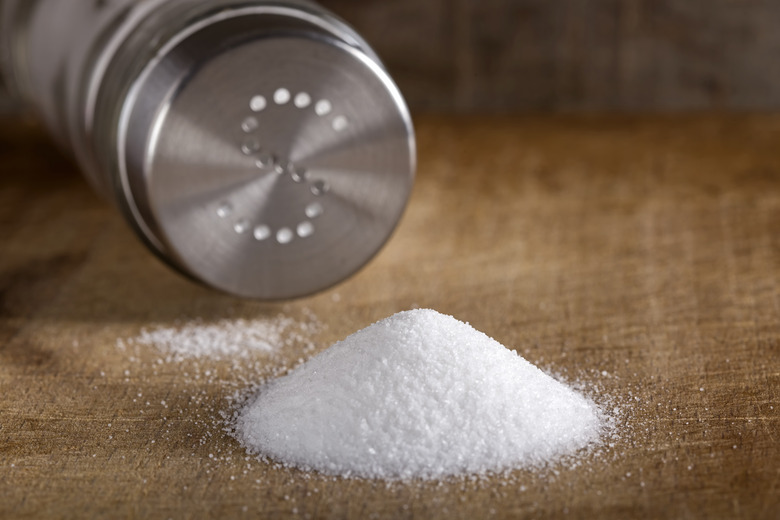Components Of Lysis Buffers
Lyse is a word that comes from Greek and merely means "to split" or "to burst."Aptly, the terms pertains to what happens to cells in a lysis buffer, a solution that breaks them open to extract their contents. Scientists use lysis buffers when extracting DNA or proteins from cells for analysis, especially in the case of bacteria. The type of cell lysis buffer varies depending on the kind of experiment, although the following are some common choices.
TL;DR (Too Long; Didn't Read)
Lysis buffers help to break open cells, so their contents can be accessed or removed. Some examples include salts, detergents, chelating agents and inhibitors, and some alkaline chemicals.
Buffer and Salt
Buffer and Salt
Buffers stabilize pH while the cells split. Tris-HCL stands as one of the most common chemicals for buffering at pH 8. HEPES is another common buffer chemical in these experiments. Sodium chloride salt may also raise the ionic strength, the total concentration of solutes outside the cells. This last point has some importance since water can diffuse across cell membranes from regions of low solute concentration to regions of high solute concentration.
Dissolving Detergents
Dissolving Detergents
Detergents dissolve cell membranes so the cell's contents can escape. The have and amphipathic molecular structure (i.e., molecules with one end that interacts readily with water molecules while the other hydrophobic or "water-fearing" end does not). They can dissolve fats by forming micelles, small clusters where the hydrophobic tails of the detergent molecules point inward toward the fat molecules. Common detergents include sodium dodecyl sulfate, or SDS, NP-40, and tritonX.
Chelating Agents and Inhibitors
Chelating Agents and Inhibitors
Lysis buffers typically also include chelating agents like ethylenediaminetetraacetic acid (EDTA) or ethylene glycol tetraacetic acid (EGTA). These chemicals bind to metal ions with two positive charges (e.g., magnesium and calcium), thereby making them unavailable for other reactions. Many DNAses (proteins that chew up DNA) and proteases (proteins that slice up other proteins) need magnesium ions to function, so by depriving them of this key ingredient, EDTA and EGTA help to reduce the level of protease or DNAse activity. They don't rule it out completely, however, and some proteases don't depend on magnesium cofactors, so lysis buffers sometimes also include chemicals called protease inhibitors, which bind to proteases, and prevent them from functioning properly.
Alkaline Lysis
Alkaline Lysis
Alkaline lysis, a very common technique for purifying plasmids from bacteria, involves three solutions. The first one contains glucose, tris-HCL buffer, EDTA, and RNAses. The glucose creates a high solute concentration outside of the bacteria so they become a little flabby, which makes them easier to lyse. The EDTA and tris-HCL function as already described, while the RNAse will chew up any RNA inside the cell to get it out of the way. The second solution actually lyses the cells. This one contains SDS detergent and NaOH, which raises the pH to 12 or above, denaturing proteins inside the cell and causing DNA to separate into single strands. The third solution contains potassium acetate to restore the pH to a more neutral level so the plasmid DNA strands can come back together. In the meantime, the denatured proteins clump up and precipitate, while the dodecyl-sulfate ions come together with the potassium ions to form an insoluble compound, which also precipitates from solution.
Cite This Article
MLA
Brennan, John. "Components Of Lysis Buffers" sciencing.com, https://www.sciencing.com/components-lysis-buffers-8148370/. 21 May 2018.
APA
Brennan, John. (2018, May 21). Components Of Lysis Buffers. sciencing.com. Retrieved from https://www.sciencing.com/components-lysis-buffers-8148370/
Chicago
Brennan, John. Components Of Lysis Buffers last modified March 24, 2022. https://www.sciencing.com/components-lysis-buffers-8148370/
